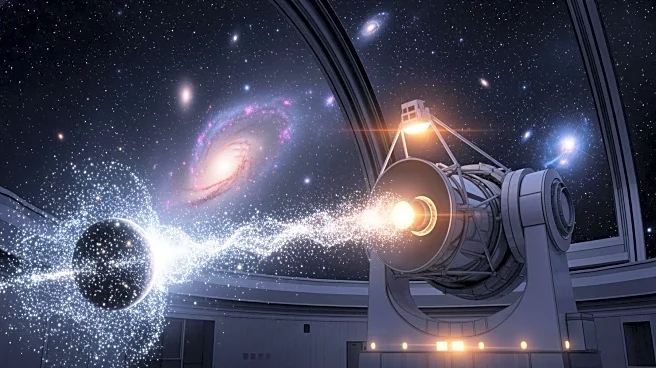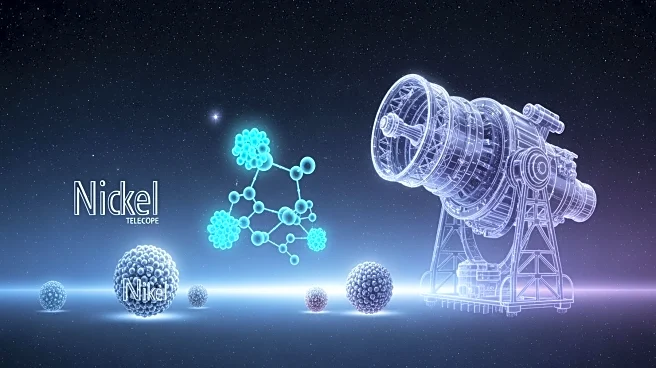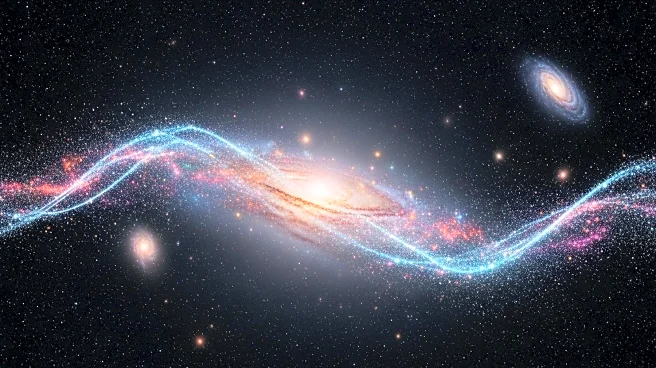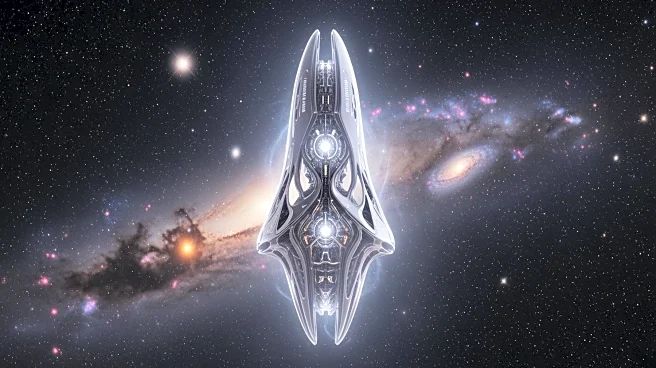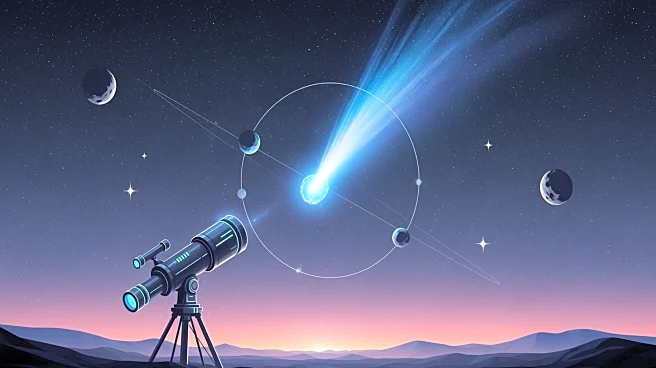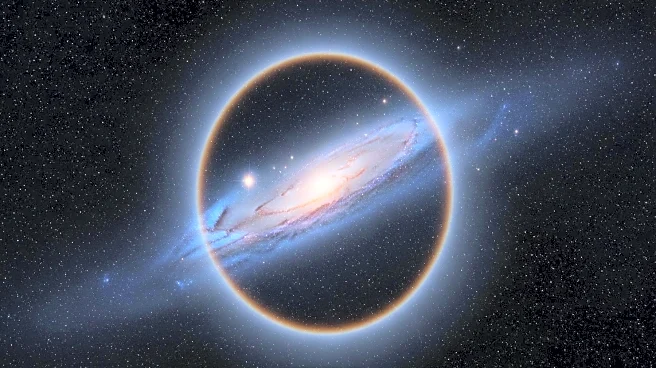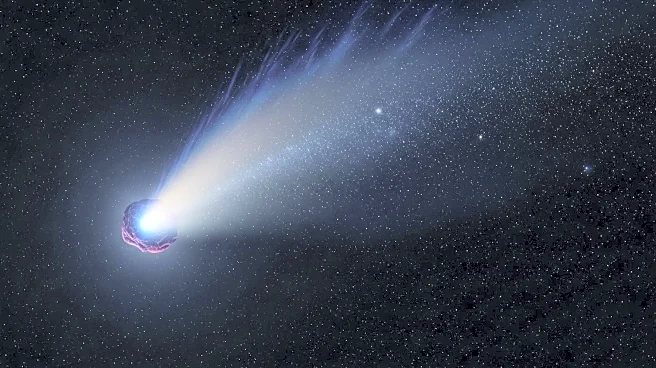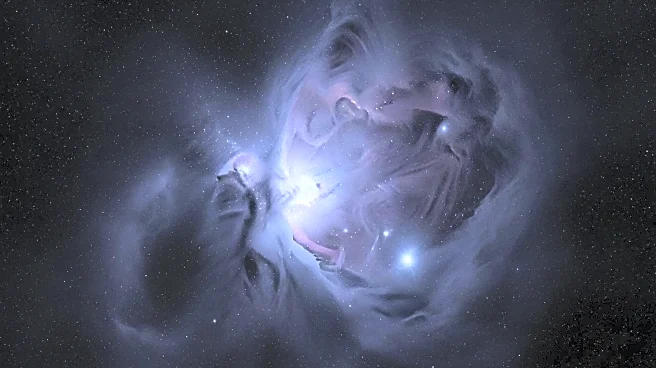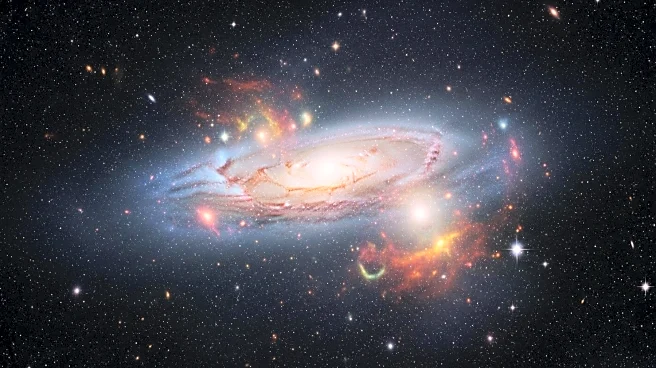What's Happening?
The Keck II telescope in Hawaii has captured new images of the interstellar object 3I/ATLAS, revealing emissions of nickel and cyanide. The data shows a puzzling anti-tail extension in the direction of the Sun,
with prominent nickel emission but no evidence for iron. This anomaly is unique to 3I/ATLAS and suggests a natural carbonyl process near its nucleus. The emissions extend to significant distances, with trace mass loss rates for cyanide and nickel.
Why It's Important?
The observations of 3I/ATLAS provide valuable insights into the composition and behavior of interstellar objects, challenging existing classifications and understanding of cometary phenomena. The unique chemical processes observed could inform future studies on the formation and evolution of such objects. This research contributes to the broader field of astrophysics by expanding knowledge of interstellar chemistry and dynamics, potentially influencing theories about the origins of the solar system and the universe.
